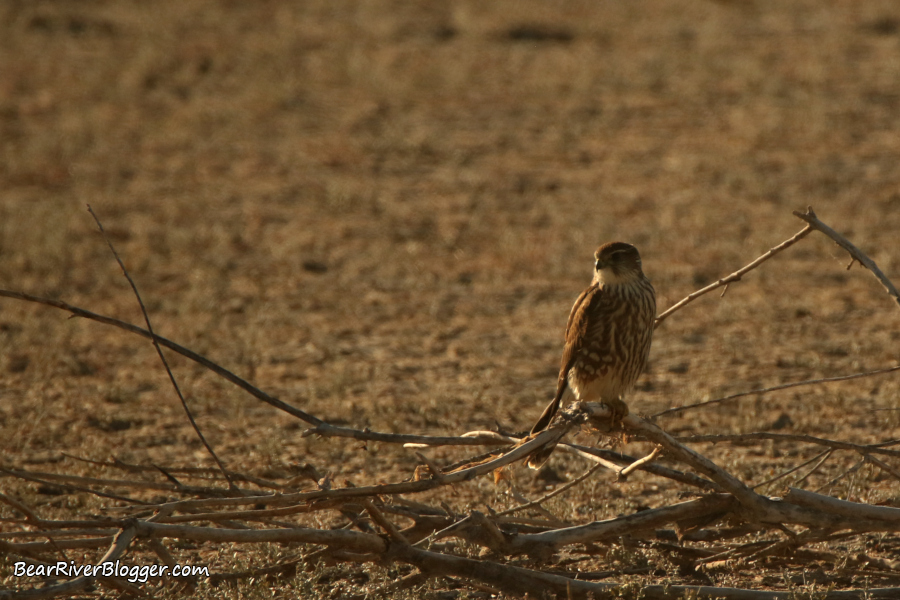With regards to birdwatching this time of year there are several species of raptors that migrate to and live on the Bear River Migratory Bird Refuge during winter that are worth looking out for and one of them, of course, is the merlin.
Slightly larger than and sometimes mistaken for an American kestrel but quite a bit smaller than either a peregrine or prairie falcon, the merlin is arguably, ounce for ounce, the most tenacious of all the North American falcons when on the wing hunting for prey.
If you’ve ever seen one chasing down another bird you know what I am talking about, they are relentless when in pursuit of prey with small to medium-sized birds being their main source of food.
In addition to birds, merlins will also eat dragonflies, bats, and even small mammals at times when it is needed but they rely heavily on a variety of birds for food, including horned larks, house sparrows, and waxwings as just a few examples.
What is quite unique to the Merlin is they don’t stoop like the peregrine falcon, diving at high speeds from above to catch prey, but rather merlins chase birds in high-speed horizontal pursuits, simply running them down with a lot of speed, tenacity, and agility on their side.
I know this first-hand from many years of raising and flying pigeons as a lifelong hobby and having to watch a merlin suddenly appear out of nowhere to chase down one of my birds with no place for the pigeon to go and nothing for it to do but try and out-maneuver the feisty falcon.
During the summer breeding season, merlins live in northern areas such as most of Canada and Alaska and winter in the western United States, Mexico, and as far south as the northern portion of South America.
Here in Utah merlins are a common winter visitor and can be found in open areas such as the Bear River Migratory Bird Refuge which is where I found the one depicted in the pictures for this blog post just last week in fact.

Being just slightly bigger than an American kestrel this particular individual was initially thought to be just that, a female kestrel, as I approached it in my car and it wasn’t until I got close enough to take these accompanying photos that I was able to correctly identify it as a merlin before it flew off.
With bald eagles and rough-legged hawks taking precedence with regards to our attention for winter raptors on the bird refuge, merlins might be overlooked by a lot of us birdwatchers and photographers alike, thinking they are just kestrels and, subsequently, giving them little or no attention.
They aren’t just another kestrel, however, but one of the 4 different species of falcons that can be found on the Bear River Migratory Bird Refuge at certain times of the year so next time you see a sleek, small raptor flying by or perched on a fence post on the refuge or elsewhere during winter, take a closer look because you might have just found a merlin.
If you are an avid birdwatcher like myself or maybe someone just getting into nature as a whole, we offer you to visit our subscribe page and sign up for email notifications for future blog posts where we share our love for the natural world, both on and off of the famous Bear River Migratory Bird Refuge auto tour route, through both photography and the written word to help encourage others to understand, enjoy, and appreciate the beauty of the earth’s natural places and the wildlife that live in them.







